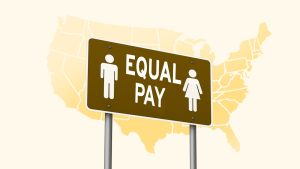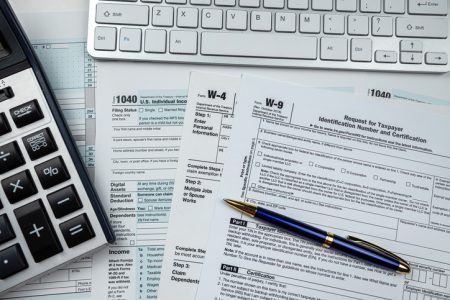Filing an extension gives you an additional six months to submit your tax return, but not to pay your taxes. There is no penalty for filing for the extension itself. However, if you owe money and don’t pay it by the original due date you may face fees and penalties. If you anticipate a balance due and don’t make a payment by the April deadline, you could be charged late payment penalties and interest.
A financial advisor can help you determine whether filing for a tax extension is the right move and help you avoid costly penalties in the process.
Is There a Penalty for Filing a Tax Extension?
The IRS allows taxpayers to request a six-month extension to file their federal return using Form 4868. This form grants an automatic extension to file until October 15 (or the next business day if it falls on a weekend). Importantly, there is no penalty just for filing a tax extension. Just follow the correct procedure and file the request by the tax deadline in April.
However, this grace period applies only to filing, not to paying. The IRS still expects you to pay your estimated taxes due by the original filing deadline, usually April 15. If you fail to pay the full amount you owe by that date, the IRS may charge:
- Late payment penalties, which are generally 0.5% of the unpaid tax per month, up to a maximum of 25%.
- Interest on the unpaid balance, which compounds daily at the federal short-term rate plus 3%.
In addition, if you fail to file your return or extension request on time, a late filing penalty of 5% per month (up to 25%) may also apply. And, if it’s more than 60 days, there’s a minimum penalty of $510.
This penalty is far steeper than the late payment penalty. Some taxpayers, like those living abroad or in disaster areas, may automatically qualify for extensions and should review IRS guidelines for special cases.
How to File a Tax Extension

Filing a tax extension is a relatively straightforward process:
- File the paperwork: IRS Form 4868 is the official form to request an extension. It must be submitted by the original due date of your tax return (typically April 15). You can file it electronically through tax software, your tax preparer or by mail.
- Pay your estimated taxes: Even though you’re extending the deadline to file, you still need to pay any taxes owed by the original deadline. You can make an estimated payment using the IRS Direct Pay system, through the Electronic Federal Tax Payment System (EFTPS), or by mailing a check with your extension form.
- Confirm receipt: If you file online, you should receive a confirmation from the IRS. If you mail your request, consider sending it via certified mail to get proof of delivery.
How Much Should You Pay When Filing an Extension?
To avoid penalties when filing an extension, you should pay the full amount you think you owe by the April deadline. While the extension gives you more time to file, the IRS still expects a timely payment. If you’re unsure how much you owe, start by reviewing your prior year’s tax return and adjust based on changes in income, deductions, and credits. The IRS also provides tax withholding calculators and estimated tax worksheets to help you make an accurate estimate.
What Happens If You Can’t Pay What You Owe?
If you can’t pay your full tax bill by the deadline, don’t panic — but do act. Even if you can’t pay everything you owe, filing your return or extension on time reduces your exposure to more severe penalties. Several IRS options are available:
- Installment agreement: The IRS will let you set up a payment plan for taxes. If you owe less than $50,000, you may be eligible for a streamlined online application process.
- Offer in compromise: If you’re experiencing financial hardship, you may qualify to settle your tax debt for less than you owe.
- Temporary delay of collection: The IRS may temporarily delay collection efforts if you’re unable to pay.
The failure-to-file penalty is typically more severe than the failure-to-pay penalty, so always file, even if you can’t pay. A tax consultant can help you determine the best course of action based on your financial situation.
State Tax Extension Rules May Be Different
A common misconception is that filing a federal tax extension automatically extends your state income tax deadline. That’s not always the case.
Each state has its own rules about extensions, including:
- Whether the state accepts the federal Form 4868 or requires a separate form.
- Whether tax payments are due by the state’s original deadline.
- Whether interest or penalties will accrue on unpaid balances.
Some states automatically grant extensions if you file a federal one, while others require additional steps. Be sure to check with your state’s tax authority to understand local deadlines and requirements. Failing to file or pay at the state level could result in separate penalties and interest charges.
Bottom Line

There is no penalty just for filing a tax extension. Submitting Form 4868 by the deadline gives you an extra six months to file your return, penalty-free. But don’t mistake that extra time for a delay on your tax payment. If you owe money and don’t pay by April 15, you could still face penalties and interest on the unpaid balance.
Tax Planning Tips
- If your financial situation is complex or you’re unsure how much you’ll owe, a financial advisor can help you calculate your tax liability and avoid costly mistakes. Finding a financial advisor doesn’t have to be hard. SmartAsset’s free tool matches you with vetted financial advisors who serve your area, and you can have a free introductory call with your advisor matches to decide which one you feel is right for you. If you’re ready to find an advisor who can help you achieve your financial goals, get started now.
- If you want to know how much your next tax refund or balance could be, SmartAsset’s tax return calculator can help you get an estimate.
Photo credit: ©iStock.com/ijeab, ©iStock.com/jeffbergen, ©iStock.com/skynesher
Read the full article here









